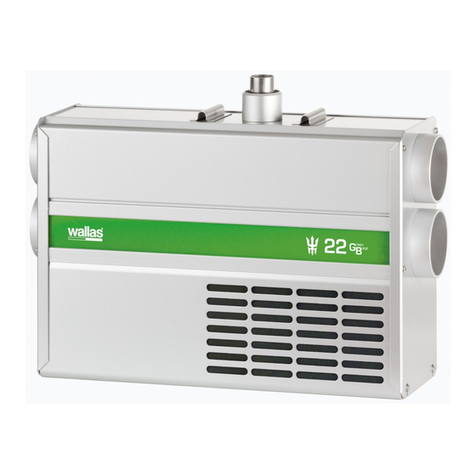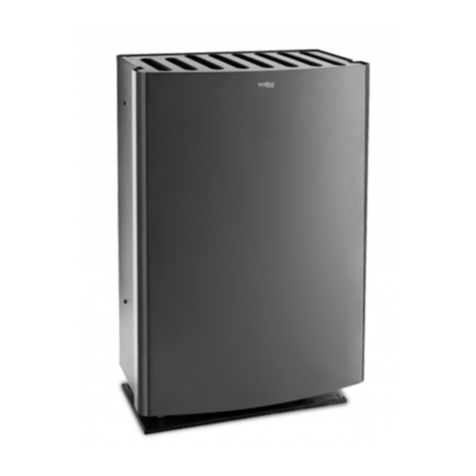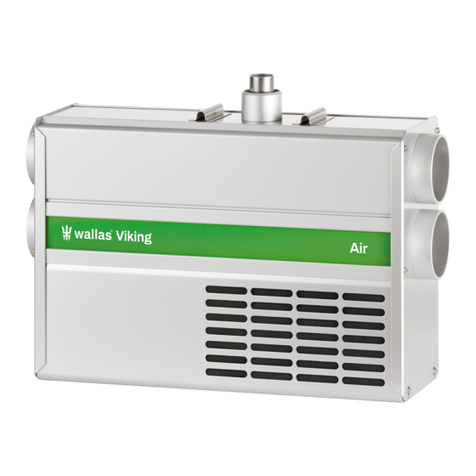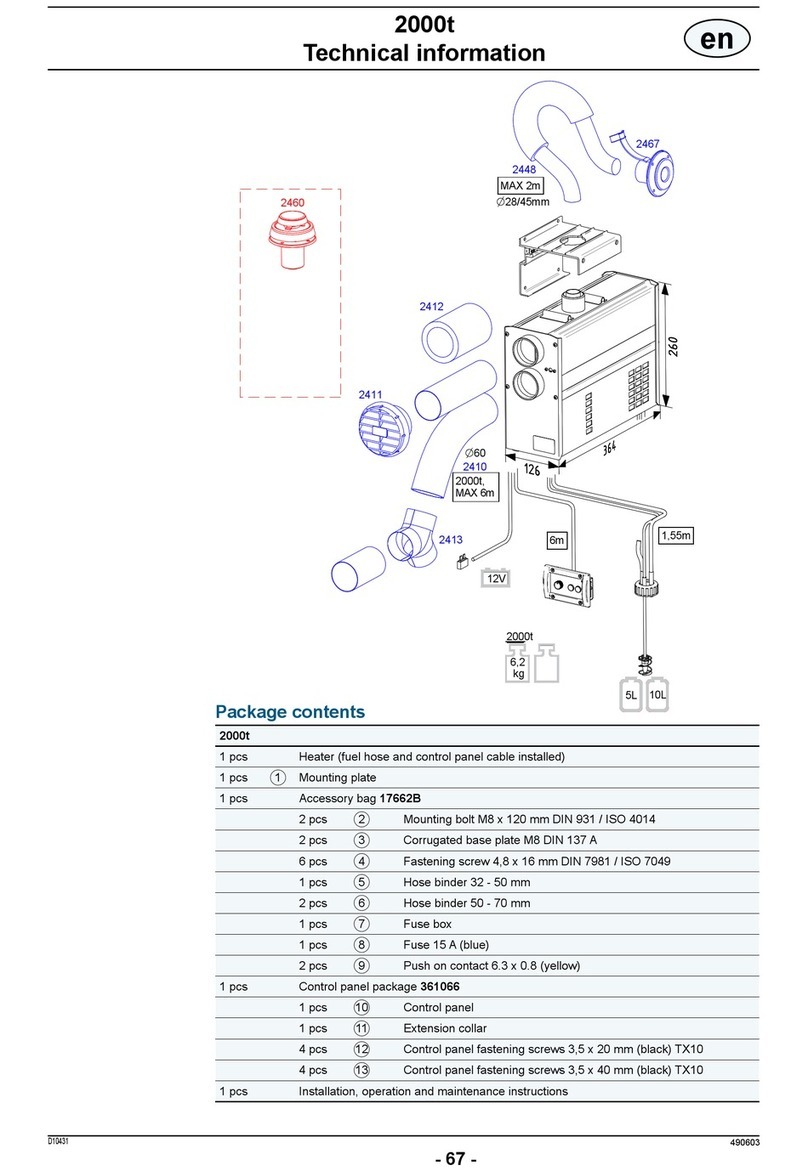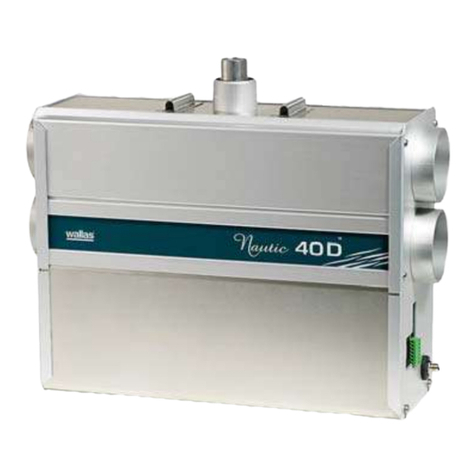
Installation
Things to note during installation
Basic installation methods
The most common installation method is a wall lead-through. Installation kit 4880
andaue-gasexhausthead4004 have been used in the installation. In addition,
the fuel tank 4030 (30 l) has been installed in the base housing 4031.
Flueinstallation.Thisinstallationmethodrequiresthebuilding’schimneytohave
oneueavailable.Theuemustnotbeconnectedtootherreplacesorequip-
ment. Installation kit 4880isrequiredfortheinstallation.Intheexampleinthe
picture, the fuel is fed from the fuel tank 4130(130l)undertheoor.
Things to note when selecting the installation location
When selecting the installation location and method, note the following:
• If you choose the wall lead-though method, install the device on a wall where
thewindpressuredoesnotdirectlyimpingetheue-gasexhausthead.When
the device is running on low power, wind pressure can snuff out the burner
ame.Theburnerwillalsogeneratemorescaleduetochangesinwindpres-
sure.
• The length of the control panel wire is 3 m. Do not install the device near to an
external door or a window, because the temperature changes in these loca-
tions are too great. The control panel contains a thermostat sensor.
• Flue installation will slightly increase the generation of burner scale.
• Avoid making the fuel and electrical lines that lead to the device excessively
long.
• The device must be positioned so that it is protected from water drips, spills or
splashes.
When installing the device, bear in mind that may be necessary to detach the
device for maintenance. Therefore, it is advisable to make the connections easy
to open and disconnect. The device does not need to be detached to clean the
burner.
The heater should be installed on the level. The inclination must not exceed 5°.
While the device should not breakdown, if it is temporarily tilted at a steep angle
(even for some hours), the burner will not yield the optimal performance, if it is
continuously inclined.
Also, consider where you place the control panel, as the length of the control
panel’s cable may pose some limitations.
Avoid installing the control panel in the immediate vicinity of a water outlet.
If possible, install the control panel on a vertical surface.
We recommend that the device be installed by an authorised Wallas service shop.
Wall lead-through
Flue installation
en
26CC / 40CC
D80151
- 41 -





















